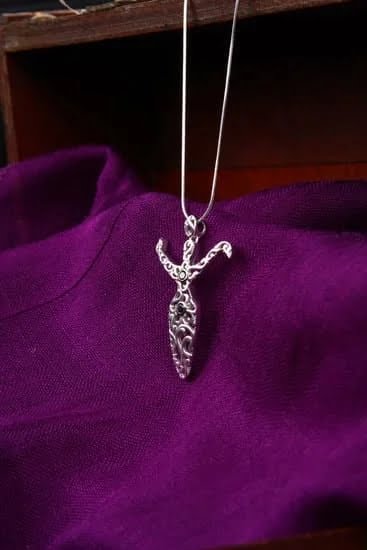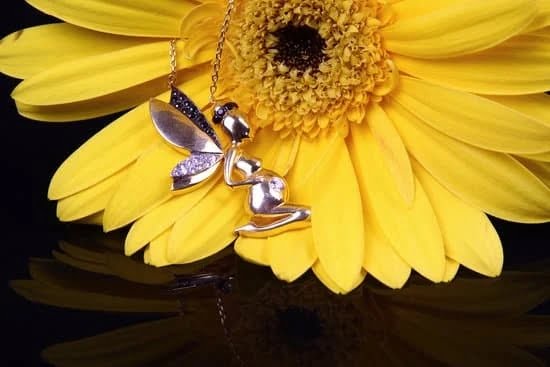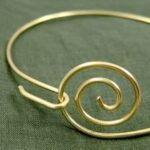Introduction
Jewelry tarnish is the discoloration of metals due to corrosion or oxidization. It’s a common problem that occurs on different types of jewelry such as silver, gold and copper. Tarnishing is caused mainly by exposure to air, water, sunlight or chemicals and it can cause your pieces to look dull and lifeless. To keep your jewelry from becoming tarnished, you should store them in anti-tarnish bags or jewelry boxes, avoid direct contact with moisture, chlorine and water and take off your jewelry before bathing and swimming.
Removing tarnish doesn’t have to be a difficult process; there are some simple methods that don’t require sophisticated tools or materials. One way is to use baking soda. Mix equal parts baking soda and water into a paste (enough to cover the piece), spread it over the affected area, leave for 5 minutes before rinsing off with warm water. Alternatively, you could clean silver pieces with vinegar and salt by filling a cup with 1/2 cup white vinegar and 2 tablespoons salt then soak for 2 minutes before gently scrubbing with a soft cloth before rinsing off with warm water. For gold pieces you can use both toothpaste (scrub onto the surface using a soft cloth) or lemon juice (dilute it slightly with lukewarm water before soaking) either of which will help restore shine when combined with light rubbing.
Identifying Different Types of Tarnish
Tarnish can appear very differently on different types of jewelry materials. Some metals such as sterling silver, copper, and brass exhibit bright yellow or green tarnish in the form of a thin layer on the surface, which is caused by contact with oxygen and moisture. Gold-plated jewelry can also become tarnished over time due to oxidation or wearing away of the protective coating. The appearance of a white powdery layer or rainbow colored patina are signs that gold-plated jewelry has been exposed to chemicals. Tarnish on fine jewelry pieces that contain silver combined with other precious metals (such as platinum) will not be as noticeable and will likely manifest as a light gray coloration. Lastly, stainless steel jewelry may develop dark spots or rust over time due to exposure to harsh chemicals or acidic solutions.
No matter what type of metal your jewelry is made from, there are ways you can remove the tarnish buildup at home. These methods range from simple cleaning solutions to more intensive polishing processes. To begin, you should gently scrub off any loose dirt and grime with a soft damp cloth before applying any solutions that can dissolve the layer of oxidation on the metal surface. For mild tarnish removal on silver or gold pieces, mix equal parts baking soda and water into a thick paste and use this mixture to buff each area until all visible signs of tarnish are removed. Additionally, for stubborn tarnish or discoloration spots, many commercial polishing creams or products designed specifically for certain metals may be used for safe-effective results. Lastly, remember that proper storage and regular maintenance are essential steps in keeping your jewelry looking like new for years to come!
Pros and Cons of Different Jewelry Tarnish Removal Techniques
There are several different techniques used to remove jewelry tarnish. Each has its own set of pros and cons.
Using Baking Soda: Baking soda is an effective, natural way to remove tarnish from silver jewelry. Simply combine water and baking soda in a small bowl and create a paste. Dip your jewelry into the paste for approximately five minutes, then rinse it off with warm water and buff dry with a soft cloth. The advantages of this method are that it’s easy, inexpensive, and doesn’t require any harsh chemicals. However, depending on how badly the jewelry is tarnished this might not be effective enough by itself, so you may need other methods as well.
Using Vinegar: Another common way to remove jewelry tarnish is to submerge it in a mixture of vinegar, hot water, and salt for about fifteen minutes or until the cleanliness desired is achieved. The advantage of this method is that it’s very easy and relatively safe to do when done correctly; however it may take longer than other techniques as well as result in an unpleasant smell afterward.
Using Jewelry Cleaner: Jewelry cleaner is widely available online or at retail stores that sell jewelry supplies and accessories. Gently scrubbing your piece with a soft toothbrush dipped in the cleaning liquid should be sufficient to bring back its original shine in just a few minutes while also being highly effective on difficult-to-remove tarnish spots; however there are some risks involved with using harsh chemicals on delicate jewelry pieces such as thin gold chains that could easily break down over time due to exposure from the cleaner’s components.
Preparing to Remove Tarnish
If you plan on removing the tarnish from your jewelry, there are a few materials you should have on hand to ensure the process goes smoothly. Before attempting to remove tarnish, make sure you have a soft cloth or brush, cleaning solution such as metal polishing liquid or paste (which is designed specifically for removing tarnish), and if necessary, some toothpaste as an alternative. It’s also helpful to use rubber gloves and safety glasses since some solutions may contain dangerous chemicals that can seriously irritate skin or eyes. Make sure the area you’re cleaning in is well ventilated with plenty of air circulation too. Additionally, ensure any stones on the jewelry piece are not loose so they don’t become dislodged during cleaning. Finding a bowl or container that suits the size of your jewelry piece is important for prevention of lost items and having all these materials nearby will save time in the long run.
Using Chemical Remedies to Remove Jewelry Tarnish
Chemical remedies can be very effective for removing tarnish in jewelry. A popular remedy is to use a solution of dishwashing detergent and warm water. To prepare the solution, mix ¼ teaspoon of liquid dish soap with one cup of warm water. After you have mixed them together, bring the container to the sink and soak your jewelry in the solution for approximately 10 minutes. Afterwards, scrub lightly with a soft cloth or bristle brush before rinsing thoroughly with cold tap water. Once you have finished cleaning, dry off your jewelry with a fresh cotton cloth and store it away.
You may also consider using a commercial tarnish remover that is specifically designed for precious metals like gold and silver. Before applying these products, read the instructions carefully and make sure that the product is suitable for your type of metal. Also be mindful of any protective coatings or glazes on your pieces that may be weakened by some chemical solutions. Apply the product following directions provided by manufacturer; typically it will involve brushing on the product using an old toothbrush and then allowing it sit for several minutes before washing off with warm water and patting dry with a clean cloth. If there is still some residue left behind, dip a corner of your cloth into lemon juice or vinegar and rub gently at these areas to completely remove all traces of tarnish.
Tricks and Tips for Removing Tarnish with Natural Ingredients
Removing jewelry tarnish is not so difficult and there are some tried and tested methods using natural ingredients that work really well. The following tips can help you get your jewelry back to its original sparkle:
1) Start by mixing 1 part baking soda and 2 parts water to form a thick paste. Gently rub the paste on the piece of tarnished jewelry with a soft cloth, being careful not to scratch or damage any stones or beads in the process.
2) To give extra shine, mix equal parts white vinegar and water in a bowl, then submerge the tarnished jewelry. Allow it to soak for 10 minutes and remove it before wiping away any residue with a soft cloth. This solution will help bring out extra luster when other methods fail.
3) If traditional jewelry cleaning products are used, make sure they are safe for your metals. Avoid products containing harsh chemicals such as chlorine bleach that could damage gold, silver and other precious metals.
4) To further protect your jewelry from tarnish, store it in an air-tight container away from direct heat, sunlight or moisture which can all contribute to tarnishing faster. Make sure to thoroughly dry off the pieces before storing them away too, as moisture increases their chance of discoloration.
5) Keep polished gemstones looking new by filling a cup with warm water mixed with mild detergent – enough just to create bubbles on top – then submerge the item for 15 minutes before rubbing gently with a soft cloth until clean. Rinse off any remaining soap residue in warm water then allow it time to dry off completely again before putting it away for storage.
Jewelry Care Tips to Help Prevent Jewelry Tarnish
In order to keep jewelry from becoming tarnished, basic preventive steps are essential. It is wise to remove jewelry before showering or swimming as chemicals in shampoo, soap, and pool water can react with the metal and cause discoloration over time. Additionally, it is important to store jewelry separately from each other to reduce chances of reaction between metals that can cause a reaction. Lastly, applying a thin layer of nail polish remover can act as a protective barrier for your pieces over time. And although layering on protective sprays or oils may seem like another way to shield your baubles from tarnish, these products can actually detract from the shine of stones and gems over time. Now that you know what not to do, here is some advice as how to go about removing jewelry tarnish when needed:
To remove light tarnishing on silver pieces without harsh chemicals, soak them in water with baking soda until you achieve the look you desire and then rinse off with cool water. For a more stubborn scriptor duller traces of discolorationon gold treasure try using a mild solution of ammonia and lukewarmwater for 15 minutes (always read instructionsanufacturer if provided by jeweller). After dirty spots have disappeared simply rinse with cool waterand polishing cloths (for example those designed specificallyjewelry). For the worst cases of tarnishingit’s bestconsultexperienced jeweler who will be ableto properly cleanse restoregarmentsusingjourneyman buffing wheelsfiner cleaning solutions. There are also numerous commercial products available directlyjewelersconsumer marketpertainingprotection against tarnish as wellas capablecleaning existing grimerestoring lustrepieces.
Maintenance Hacks for Keeping Jewelry Looking Shiny
Jewelry tarnishing is something that most fashion jewelry lovers have to deal with at some point in time, as eventually all pieces of jewelry will become exposed to oxygen and daily wear and tear. Fortunately, removing jewelry tarnish is relatively easy. The two popular methods for banishing shiny bling from being dulled by tarnish are: toothpaste and baking soda.
Toothpaste works because it is slightly abrasive, which makes it capable of polishing away any surface layers once they start to corrode due to oxidation. Start by dabbing a small amount of non-gel toothpaste onto an old toothbrush and add a little bit of warm water to create a paste. Then use the soft bristles of the brush to work away at the surface, gently brushing until the tarnish is removed or greatly diminished. Once complete, rinse off with warm water and pat dry with a clean cloth.
Alternatively, baking soda has long been credited as one of the best solutions for cleaning silver or gold (or any other kind) jewelry from dark patches caused by oxidation. The process is similar: Take around half a teaspoon of soda and mix it with 1 or 2 teaspoons of water until it forms into a paste. Dab this onto your jewelry piece using a soft cloth before buffing in circular motions—it should quickly dissolve any stubborn marks left behind by oxidization! When finished, rinse off with warm water and buff dry with a clean microfiber cloth.
Conclusion
Removing jewelry tarnish isn’t a challenging task, as long as you use the right materials and techniques. Depending on the type of material your jewelry is made from, you may have success using methods such as vinegar, baking soda and water baths, ketchup or toothpaste; soapy warm water with a soft-bristle brush is an option that works on all types of jewelry. To help prevent future damage to your jewelry affected by tarnish, consider storing it in an airtight container or away from open windows. It is also important to clean your pieces regularly to avoid tarnishing build up over time. Following these steps will help ensure beautiful pieces for years to come.

Welcome to my jewelry blog! My name is Sarah and I am the owner of this blog.
I love making jewelry and sharing my creations with others.
So whether you’re someone who loves wearing jewelry yourself or simply enjoys learning about it, be sure to check out my blog for insightful posts on everything related to this exciting topic!





